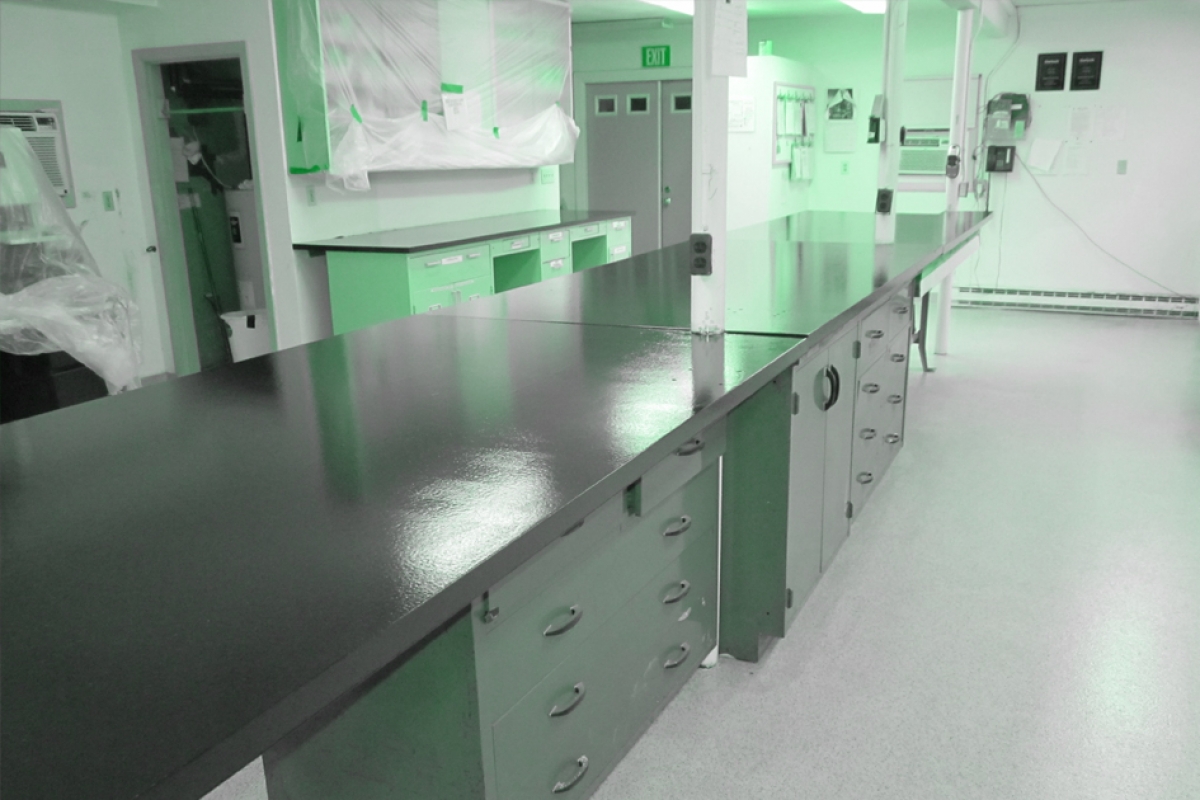
Pharmaceutical Flooring
The pharmaceutical industry is on the cutting edge of scientific progress and research, working around the clock to develop, test, and produce medications and treatments that improve the health outcomes and quality of life for patients across the globe. As pharmaceuticals are such a sensitive and precise science, great care must be taken to ensure that every aspect of the facilities involved, at every step in the process, is designed to protect cleanliness and avoid the risk of contamination. The type of flooring system installed could not be more important than in this industry.
Epoxy Flooring in Pharma Industry
Pharmaceutical research often involves the use of a wide range of concentrated chemicals and dynamic organic compounds, and the flooring system in many spaces must be durable enough to withstand spills of potentially corrosive and/or toxic materials. Organic solvents frequently used to clean equipment in the pharmaceutical industry can damage many traditional flooring systems. Corrosion-resistant epoxy floor coatings and other resinous concrete floor coating systems are designed to withstand contact with these substances and minimize the risk of absorption, while protecting against structural damage to the slab.
The adhesives used to secure sheet or roll goods, tile or plank flooring to the substrate can break down over time, creating dark hidden pockets underneath the floor material where moisture can accumulate and bacteria or mold can flourish. In addition to risking damage to the flooring system itself, this can lead to contamination of the workspace, cleanroom or production area. Epoxy and similar resinous flooring is also a popular choice in the pharmaceutical industry as, unlike other flooring systems, it bonds directly to the underlying concrete, without pockets or gaps between the slab surface and the floor covering.
Pharmaceutical Flooring that Follows cGMPs
Every food or drug facility has concerns regarding compliance with the FDA’s cGMP (current Good Manufacturing Practices) guidelines. These standards govern the flooring systems’ mechanical, chemical, and impact durability, as well as provide specific guidelines for production lines, research facilities, packaging systems, and storage areas. Seamless epoxy and urethane flooring can help reduce the risk of biological contamination, and static control flooring can help to mitigate the risk of explosions or fires in areas that contain volatile chemical compounds or powders.
As epoxy and other resinous floor coatings are applied in liquid form, the surface produced is nearly seamless. By minimizing hard-to-reach cracks, seams, or creases where debris and contaminants can accumulate, these flooring systems can be far easier to effectively clean than other more traditional flooring options, allowing for a safer and more hygienic setting in which to conduct pharmaceutical research and manufacturing.
Protecting Worker Safety with Pharma Flooring
When handling sensitive substances, a slip and fall accident can be even more dangerous than it would be in another setting, so slip-resistance and worker safety is often a key focus in many areas of pharma facilities. Grit can be added to epoxy and urethane flooring systems to provide more traction against slip and falls, yet still maintain an easy to clean seamless surface. It is also possible to section off the floor into different areas with different colors, or to designate hazardous areas. By providing a clean, smooth surface that is highly durable, resistant to abrasion, can withstand toxic spills, impacts and other risks, a specially-formulated epoxy or resinous coating offers a long-term solution for the pharmaceutical industry.
Tennant Company floor maintenance machines are valued the world over for their reliability and high quality. The same level of product integrity and service extends to Tennant Coatings—our team of professionals is ready to support your pharmaceutical and biotech facility flooring design, selection and installation. Contact us today!
Resources & Articles
CLIN ® "Resources" page is for individuals/companies seeking information on cleanrooms and controlled environments. Find Cleanroom News, Discussion Forums, Cleanroom Cleaning Recommendations, Cleanroom Terminology, Cleanroom Directory, and more.
Content Disclaimer
Information are contributed by/from different websites and all credit goes to its respective owners/writers/websites/companies and etc, and while we endeavour to keep the information up to date and correct, we make no representations or warranties of any kind, express or implied, about the completeness, accuracy, reliability, suitability or availability with respect to the website or the information, products, services, or related graphics contained on the website for any purpose. Any reliance you place on such information is therefore strictly at your own risk.
In no event will we be liable for any loss or damage including without limitation, indirect or consequential loss or damage, or any loss or damage whatsoever arising from loss of data or profits arising out of, or in connection with, the use of this website.
Through this website you are able to link to other websites which are not under the control of respective owners/writers/websites/companies and etc. We have no control over the nature, content and availability of those sites. The inclusion of any links does not necessarily imply a recommendation or endorse the views expressed within them.
Every effort is made to keep the website up and running smoothly. However, CLIN ® takes no responsibility for, and will not be liable for, the website being temporarily unavailable due to technical issues beyond our control.











